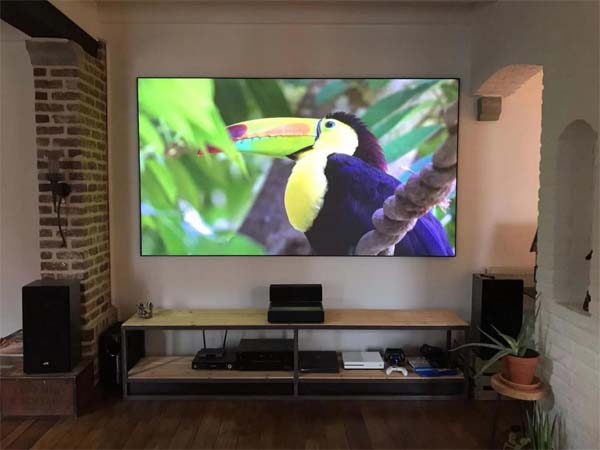It’s important to make sure your projector will fill the screen from its intended position. You can use the unit’s throw ratio information to discern this. Just divide the distance between the projector and screen by the throw ratio and you’ll get the image width. It’s important to note that it’s image width not the diagonal.
Image width x Throw ratio = Distance from screen

So, if you have a screen that is 2.6m wide and a projector with a throw ratio of 1.3 you’ll need to put the projector 3.38m away from the screen.
As well as the size of screen, consider the type. Do you want a fixed model that sits on your wall or a roll-up option that can be hidden away after use? The answer depends on whether the room is a multi-use space. If so, hiding the screen away makes a lot of sense. In a dedicated home cinema room the fixed option is the way to go, because the screen is always ready for viewing and adequately tensioned to ensure a smooth, flat surface for the projector’s image. It also doesn’t need power to operate any motors.
While the fashion with TVs dictates that a minimal border is ideal, we advise against carrying that through to projector screens. It’s best to get a fixed screen with a relatively wide frame. The frame should be covered with black light absorbing material, so that any part of the projector image that falls on it isn’t reflected. This means that millimetre perfect alignment of the projector’s image isn’t required and also that your picture is perfectly framed, helping it standout.


